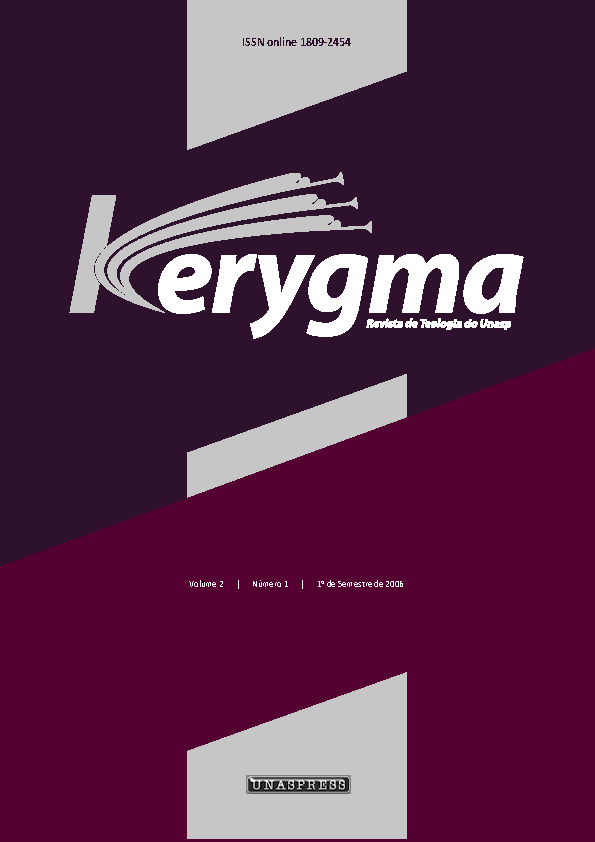Abstract
The objective of this research was to comprehend the influence of Adventist school education on the formation of the identity and faith of teenagers. Twelve teenagers from the senior year of High School were interviewed. The students were between 17 and 18 years of age, females, studying at the Campinas’ Adventist Academy and at the Hortolândia Adventist Academy, two cities in the interior of the state of São Paulo. The analysis was realized based on the theoretical models of Erik Erikson and James Fowler. Qualitative methodology was applied, based on the analysis of the content of the information obtained in the interviews. The interviews were semi–structured, using volunteers chosen from a list provided by the Academy, and by direct invitation. The analysis of the data revealed that Adventist Education influenced the identity of the teenager, favoring the formation of identity, promoting the formation of a mature and healthy teenager, able to question and think on possibilities and alternatives, capable of confronting crises, and secure about who they are and who they wish to become. It was also verified that the faith of the teenager is influenced by experience with the environment of Adventist education, which provided, in a significant way, a foundation him, with a valor structure, a meaning structure, and meaning for life. It was also observed that it had no impact on faith in terms of religious creed – at least not with regard to open adherence to the IASD – being that six non–Adventist interviewees, who studied during their entire High School term in Adventist Schools, left High School even more convinced of their own religious concepts. As to the crisis of identity that teenagers face, the interviews indicated the possibility that the dialogue practiced by professors and their posture as positive models, at times taking on a parental function, were important for the teenagers, helping them to make appropriate decisions at critical moments, as well as with personal valuation in situations when low self–esteem flourished. Some of the teenagers indicated the need for some professors to improve their relationships with students, believing that such proximity could help optimize learning. Finally, the research offers observations regarding Religion Classes, and that they address more directly the needs of the students instead of focusing on religious discourse.Authors who publish on Kerygma must agree to the following terms:
- Once accepted for publication, the copyright of articles is automatically transferred to Kerygma.
- All material used in the text that is copyrighted by third parties must be duly referenced.
- Authors must also retain the reproduction rights of images and tables in their material, if necessary.
- The authors guarantee that the submitted text is entirely their authorship and has not been submitted and/or published elsewhere.
- The opinions, ideas and concepts expressed in the texts are the sole responsibility of their authors and do not necessarily represent the opinion of Kerygma;
- The editors reserve the right to make textual adjustments and adapt to the publication's norms.
- Authors retain copyright and grant the journal the right of first publication, with the work simultaneously licensed under Creative Commons Attribution-NonCommercial 4.0 International, which allows sharing of the work with acknowledgment of authorship and initial publication in this journal. This license allows others to remix, adapt, and build upon your work non-commercially, as long as they give proper credit to you and their new works are not used for commercial purposes. However, users are not required to license those derivative works under the same terms.
- The authors agree with the free reproduction of their material by Kerygma, which may adapt, modify, condense, summarize, reduce, compile, expand, alter, mix with other content, include images, graphics, digital objects, infographics and hyperlinks, illustrate, diagram, divide, update, translate and carry out any other transformations, requiring the participation or express authorization of the authors.
- The authors agree that Kerygma can distribute the articles through cable, fiber optics, satellite, airwaves or any other system that allows access to the user at a specific time and place, either by free channels or by systems that import payment. Kerygma may also include work in a physical or virtual database, archiving in printed format, storing on a computer, in a cloud system, microfilming and other current forms of archiving or that may still be developed, with or without profit.
- Authors are permitted to enter into separate, additional agreements for the non-exclusive distribution of the published version of the work in this journal (e.g., publishing it in an institutional repository or as a book chapter), with acknowledgment in the new publication of its initial publication in this journal.
- Kerygma owns the rights to all works published by it. The full reproduction of these texts in other publications, for any other purpose, by any means, requires written authorization from the publisher. The same goes for partial reproductions, such as summary, abstract, portions with more than 500 words of the text, tables, figures, illustrations, etc.
- Authors are granted permission and encouraged to publish and distribute their work online (e.g., in institutional repositories or on their personal websites) at any point before or during the editorial process. This is because it can lead to productive alterations and increase the impact and citation of the published work. (See "The effect of open access and downloads ('hits') on citation impact: a bibliography of studies.")
Downloads
Download data is not yet available.

